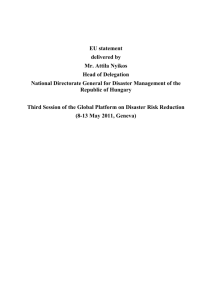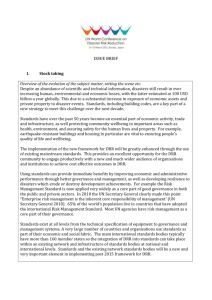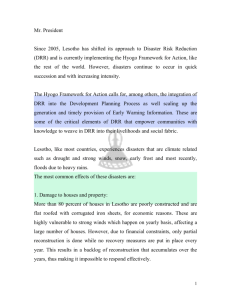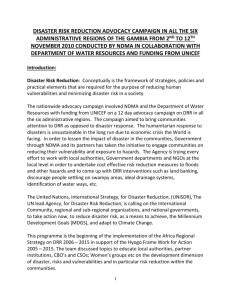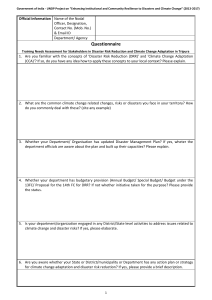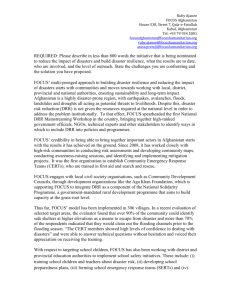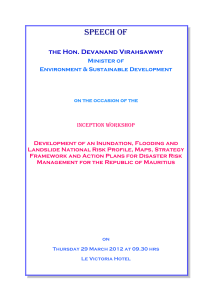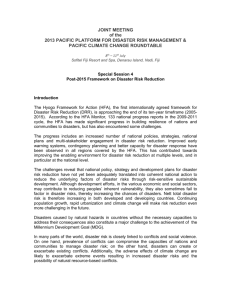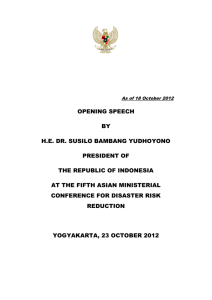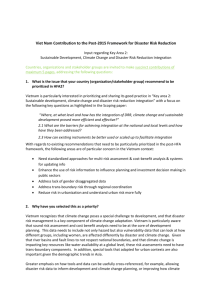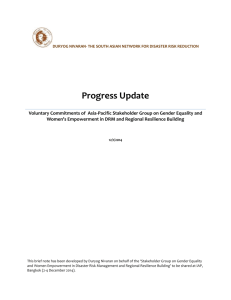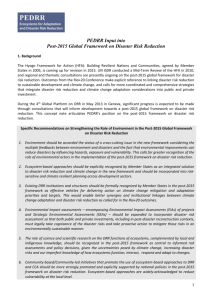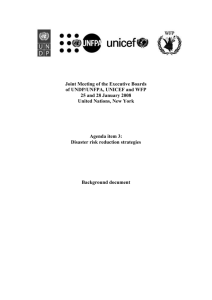Concept paper - PreventionWeb
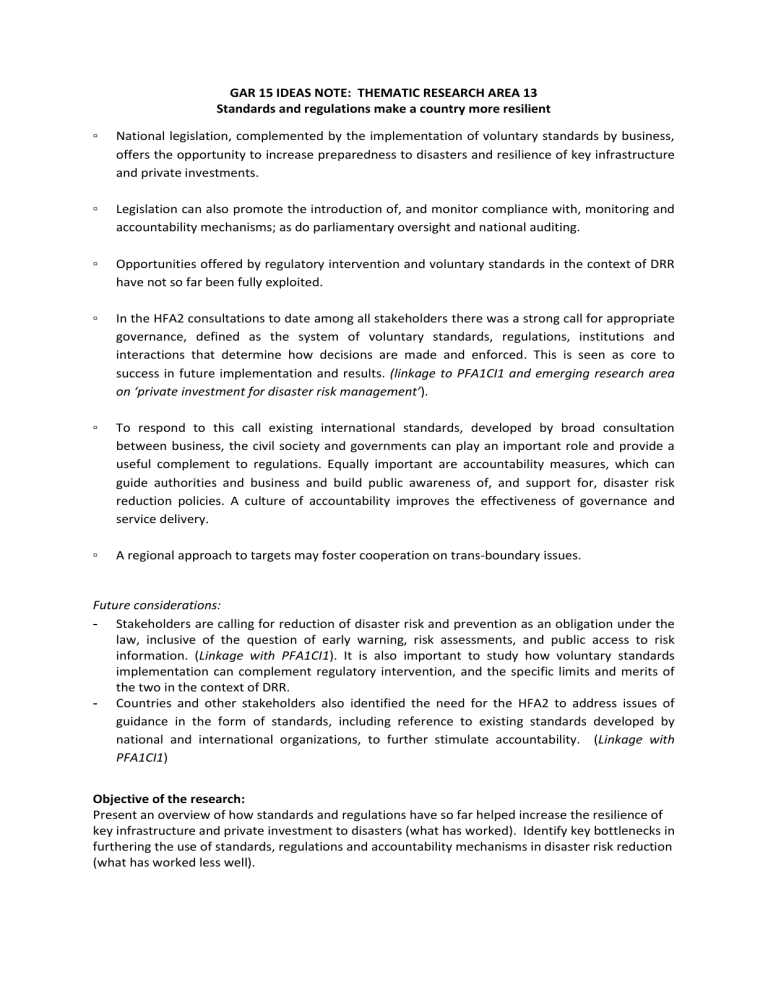
GAR 15 IDEAS NOTE: THEMATIC RESEARCH AREA 13
Standards and regulations make a country more resilient
▫ National legislation, complemented by the implementation of voluntary standards by business, offers the opportunity to increase preparedness to disasters and resilience of key infrastructure and private investments.
▫ Legislation can also promote the introduction of, and monitor compliance with, monitoring and accountability mechanisms; as do parliamentary oversight and national auditing.
▫ Opportunities offered by regulatory intervention and voluntary standards in the context of DRR have not so far been fully exploited.
▫ In the HFA2 consultations to date among all stakeholders there was a strong call for appropriate governance, defined as the system of voluntary standards, regulations, institutions and interactions that determine how decisions are made and enforced. This is seen as core to success in future implementation and results. (linkage to PFA1CI1 and emerging research area
on ‘private investment for disaster risk management’).
▫ To respond to this call existing international standards, developed by broad consultation between business, the civil society and governments can play an important role and provide a useful complement to regulations. Equally important are accountability measures, which can guide authorities and business and build public awareness of, and support for, disaster risk reduction policies. A culture of accountability improves the effectiveness of governance and service delivery.
▫ A regional approach to targets may foster cooperation on trans-boundary issues.
Future considerations:
- Stakeholders are calling for reduction of disaster risk and prevention as an obligation under the law, inclusive of the question of early warning, risk assessments, and public access to risk information. (Linkage with PFA1CI1). It is also important to study how voluntary standards implementation can complement regulatory intervention, and the specific limits and merits of the two in the context of DRR.
- Countries and other stakeholders also identified the need for the HFA2 to address issues of guidance in the form of standards, including reference to existing standards developed by national and international organizations, to further stimulate accountability. (Linkage with
PFA1CI1)
Objective of the research:
Present an overview of how standards and regulations have so far helped increase the resilience of key infrastructure and private investment to disasters (what has worked). Identify key bottlenecks in furthering the use of standards, regulations and accountability mechanisms in disaster risk reduction
(what has worked less well).
Provide indications on how to move forward: discuss how standards/regulations can be a tool for regulators in designing and implementing a country-wide system to manage disaster risks, provide guidance in designing appropriate governance systems and boost accountability.
Preliminary chapter outline
1.
Standards and regulations make a country more resilient: The section will present an overview
(about 10 pages) of how standards and regulations have so far been used to prevent and manage disasters (e.g. standards informing physical and telecommunications infrastructure, ISO
22300 “Societal security”, ISO 31000 “Risk Management”, etc). The overview will be illustrated by case studies of specific situations in which technical standards made a difference (e.g. NZ
Christchurch earthquakes) and of current use of standards by relief agencies in emergencies (e.g. use of ITU standards in emergency response).
Invited input papers: Presentation of existing standards and discussion of their possible or proven contribution to DRR. Case studies of how regulations and standards have helped communities, private companies and authorities in preparing for and responding to disasters.
Case studies illustrating how disaster could have been better managed if
standards/regulations had been implemented.
2.
Major factors holding back the use of standards in DRR (8 pages): This section will discuss the role that quality infrastructure plays in the prevention and treatment of disaster risk. Quality infrastructure is understood as the totality of the institutional framework (public and/or private) necessary to provide acceptable evidence that products and services meet defined requirements. Unless a country has sufficient capacity in place to conduct tests, audits and inspections on materials, production methods and personnel, its capacity to implement standards will be hampered. For example: falsified or inaccurate test results may mislead authorities in the identification, assessment and treatment of disaster risk. The section will point to deficiencies in developing countries that hold back their capacity to use standards in the context of DRR, and discuss options including the need for donors’ specific assistance in this complex area.
Invited input papers: Discussion about the role that quality infrastructure can play in the context of DRR. Case studies of how quality infrastructure has contributed to prevent or mitigate the consequences of disasters. Case studies illustrating how disaster could have been
better managed if required quality infrastructure had been in place.
3.
Moving forward: How to use standards in designing and implementing a country-wide system
to manage disaster risks (10 pages) This section will present a country-wide disaster risk management framework, developed on the basis of international standards and complete with required accountability mechanisms. It will show how standards should be used in prevention, stabilization and recovery from disasters.
Invited input papers: Inputs presenting governance mechanisms that have been put in place to prevent and mitigate disasters, illustrating the respective roles of accountability measures,
standards and regulatory tools.
CLO: UNECE
CLA: Lorenza Jachia,
Secretary, Working Party on Regulatory Cooperation and Standardization Policies








